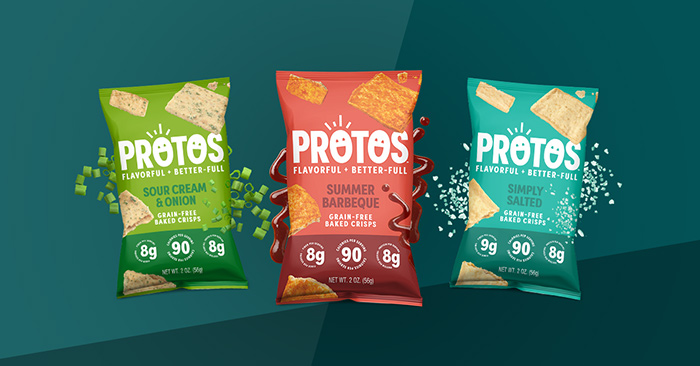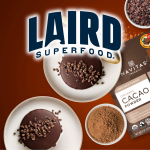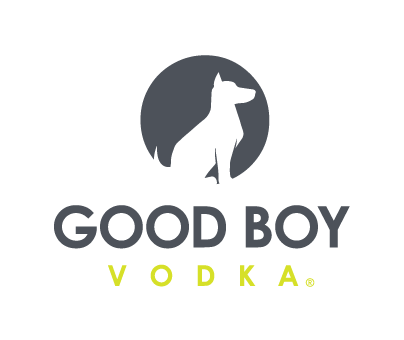Antithesis Foods Pivots From Sweet to Savory Due To Scalability Constraints

Facing persistent manufacturing challenges, food science company Antithesis Foods has announced it is sunsetting its original snack line Grabanzos and launching a new savory crisp brand called Protos this week.
According to Antithesis Food’s co-founder and CEO Jason Goodman, the company was repeatedly thwarted despite multiple attempts to scale production on Grabanzos, as it encountered issues ranging from securing its chocolate supply to “unsustainable” cold-chain shipping requirements due to the chocolate coating. By introducing Protos – bagged crisps made from a blend of legumes, pea protein and starches such as tapioca and potato – the company is aiming to reorient its strategy around a simpler product with greater growth potential.
“We started this company because we think good-for-you food should taste really good… Protos are a healthy snack that really show the mission,” Goodman said. “They taste great and they’re great for you, so it felt more correct.”
The change was not made lightly. As mentioned, Antithesis made efforts to address the production problems with Grabanzos, including various co-packing partnerships and restriction of warehouse shipments to specific days of the week, eventually the company was forced to raise shipping prices on the consumer end. Goodman said the company never made much progress with the product’s distribution, relying mostly on online sales due to an inability to distribute to retailers beyond New York State.
In addition, Goodman explained the end product – originally intended to be a better-for-you take on malt balls – was good, “but not that great for you,” with each piece containing 70% chocolate.
However, the snack’s demise was ultimately sealed last spring when the company conducted a side-by-side consumer sensory test in which Protos scored higher in all categories from ‘willingness to purchase’ to ‘overall likability.’
Goodman said at the time it felt like “the sky was falling,” but acknowledged that the company needed to rethink its strategy with a product that supported its mission and had a more sustainable long-term growth plan. He explained that while Protos’ ingredient label puts it “in a box” within the legume-snack category, he hopes to position the brand so that the ingredients “are just part of the story.” That means if more nutrient-dense, better tasting ingredients come along, he said, they are willing to reformulate.
“You don’t call a cookie a wheat-based confection, so these are just chips,” Goodman said. “They’re made of different stuff, but to us it’s just a chip. We happen to think that if you started again and wanted to invent chips, you should start with ingredients like legumes, pulses and anything else that’s just better-for-you.”
As the company transitions, Goodman said it plans to continue building the Protos brand online and at New York-area retailers over the next year while selling off its remaining Garbanzos inventory. While that brand may be gone for now, he emphasized they may revisit the product in the future or license the technology to a company who “cares more about the chocolate,” which he admitted was never Antithesis’ focus. But for now the company’s priority is on seeing where Protos can take them, with new flavors likely to arrive later this year.
“It’s important that we know what consumers are into, that these ingredients work and everything tastes really great,” Goodman said. “So it’s important to have both [an ingredient business and a brand] we think. The brand lets us move quicker, however, if an ingredient customer wants something, they’re usually larger and it helps us get to scale.”
















